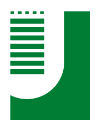预约演示
更新于:2025-05-07
Ergosterol x SQLE
更新于:2025-05-07
基本信息
相关靶点 |
关联
1
项与 Ergosterol x SQLE 相关的药物作用机制 麦角固醇生物合成抑制剂 [+1] |
非在研适应症- |
最高研发阶段批准上市 |
首次获批国家/地区 日本 |
首次获批日期1991-12-18 |
16
项与 Ergosterol x SQLE 相关的临床试验NCT06689852
MULTICENTRIC, RANDOMIZED, EVALUATOR BLINDED CLINICAL INVESTIGATION for the EVALUATION of EFFICACY and SAFETY of TWO PRODUCTS for the TREATMENT of ONYCHOMYCOSIS
The efficacy and safety of ENRICHED (X92001591) will be evaluated in a multicentric, randomized, evaluator blinded clinical investigation in 88 patients.
开始日期2024-11-01 |
申办/合作机构 |
ChiCTR2300074178
Q-switched Nd:YAG laser versus Amorolfine Hydrochloride Cream in treatment of Distal lateral subungual onychomycosis in older adults
开始日期2023-08-01 |
申办/合作机构- |
NCT05482763
Pilot Study on the Evaluation of the Efficacy, Tolerability and Safety of Topical and Oral Antifungals in the Treatment of Onychomycosis and Creation of a Library of Dermatological Clinical Isolates
This pilot, prospective, observational drug study aims to evaluate the efficacy, tolerability and safety of topical and oral antifungals in the treatment of onychomycosis caused by yeasts, dermatophytic moulds and non-dermatophytic moulds as well as correlate the scores in the MALDI-TOF method for the 'identification of genus and species of higher fungi utilizing the comparison between identification in direct optical microscopy, culture examination and optical microscopy and macroscopic and onychoscopic clinical aspects. Furthermore, an optional substudy will evaluate the drug resistance of clinical isolates using molecular or genetic methods.
开始日期2022-07-20 |
100 项与 Ergosterol x SQLE 相关的临床结果
登录后查看更多信息
100 项与 Ergosterol x SQLE 相关的转化医学
登录后查看更多信息
0 项与 Ergosterol x SQLE 相关的专利(医药)
登录后查看更多信息
7
项与 Ergosterol x SQLE 相关的文献(医药)2021-01-01·Journal of Biological Chemistry2区 · 生物学
Deubiquitinase Ubp3 enhances the proteasomal degradation of key enzymes in sterol homeostasis
2区 · 生物学
Article
作者: Zhao, Zhenwen ; Lan, Qiuyan ; Deng, Zixin ; Wang, Yihao ; Li, Yanchang ; Gao, Yuan ; Xu, Ping ; He, Fuchu ; Lu, Hui ; Wu, Junzhu ; Wang, Fuqiang ; Li, Zhaodi
2007-05-01·Chinese Medical Journal3区 · 医学
Genome-wide expression profiling of the response to terbinafine in Candida albicans using a cDNA microarray analysis
3区 · 医学
ArticleOA
作者: Yue-bin ; Zeng ; Gu ; Lian ; Hong-ni ; Qian ; Ma ; Yuan-shu
2005-06-01·Journal of Antimicrobial Chemotherapy2区 · 医学
Squalene epoxidase encoded by ERG1 affects morphogenesis and drug susceptibilities of Candida albicans
2区 · 医学
Article
作者: Pasrija, Ritu ; Ernst, Joachim F. ; Prasad, Rajendra ; Prasad, Tulika ; Krishnamurthy, Shankarling
分析
对领域进行一次全面的分析。
登录
或

生物医药百科问答
全新生物医药AI Agent 覆盖科研全链路,让突破性发现快人一步
立即开始免费试用!
智慧芽新药情报库是智慧芽专为生命科学人士构建的基于AI的创新药情报平台,助您全方位提升您的研发与决策效率。
立即开始数据试用!
智慧芽新药库数据也通过智慧芽数据服务平台,以API或者数据包形式对外开放,助您更加充分利用智慧芽新药情报信息。
生物序列数据库
生物药研发创新
免费使用
化学结构数据库
小分子化药研发创新
免费使用



